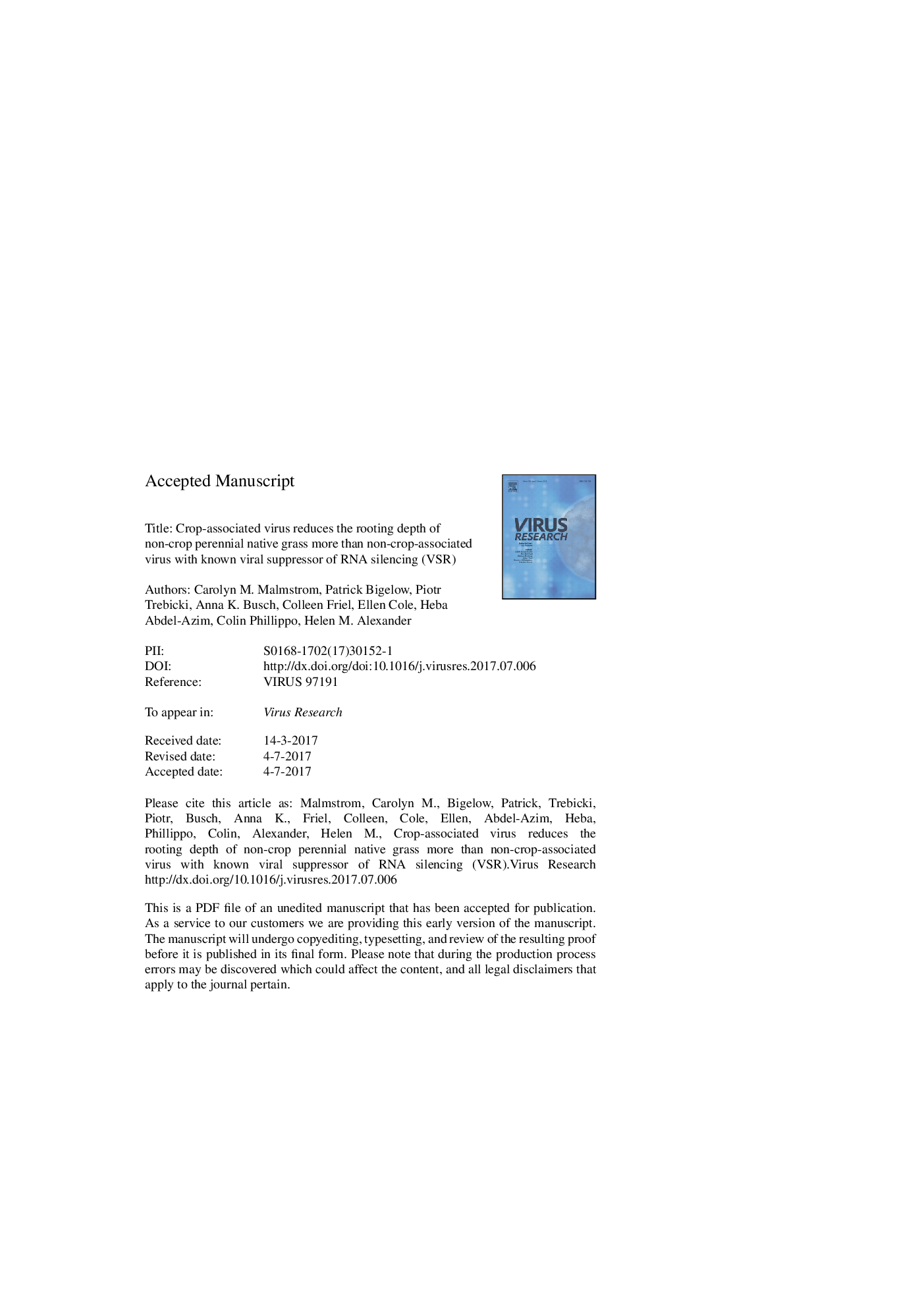| Article ID | Journal | Published Year | Pages | File Type |
|---|---|---|---|---|
| 8752118 | Virus Research | 2017 | 50 Pages |
Abstract
As agricultural acreage expanded and came to dominate landscapes across the world, viruses gained opportunities to move between crop and wild native plants. In the Midwestern USA, virus exchange currently occurs between widespread annual Poaceae crops and remnant native perennial prairie grasses now under consideration as bioenergy feedstocks. In this region, the common aphid species Rhopalosiphum padi L. (the bird cherry-oat aphid) transmits several virus species in the family Luteoviridae, including Barley yellow dwarf virus (BYDV-PAV, genus Luteovirus) and Cereal yellow dwarf virus (CYDV-RPV and âRPS, genus Polerovirus). The yellow dwarf virus (YDV) species in these two genera share genetic similarities in their 3â²-ends, but diverge in the 5â²-regions. Most notably, CYDVs encode a P0 viral suppressor of RNA silencing (VSR) absent in BYDV-PAV. Because BYDV-PAV has been reported more frequently in annual cereals and CYDVs in perennial non-crop grasses, we examine the hypothesis that the viruses' genetic differences reflect different affinities for crop and non-crop hosts. Specifically, we ask (i) whether CYDVs might persist within and affect a native non-crop grass more strongly than BYDV-PAV, on the grounds that the polerovirus VSR could better moderate the defenses of a well-defended perennial, and (ii) whether the opposite pattern of effects might occur in a less defended annual crop. Because previous work found that the VSR of CYDV-RPS possessed greater silencing suppressor efficiency than that of CYDV-RPV, we further explored (iii) whether a novel grass-associated CYDV-RPS isolate would influence a native non-crop grass more strongly than a comparable CYDV-RPV isolate. In growth chamber studies, we found support for this hypothesis: only grass-associated CYDV-RPS stunted the shoots and crowns of Panicum virgatum L. (switchgrass), a perennial native North American prairie grass, whereas crop-associated BYDV-PAV (and coinfection with BYDV-PAV and CYDV-RPS) most stunted annual Avena sativa L. (oats). These findings suggest that some of the diversity in grass-infecting Luteoviridae reflects viral capacity to modulate defenses in different host types. Intriguingly, while all virus treatments also reduced root production in both host species, only crop-associated BYDV-PAV (or co-infection) reduced rooting depths. Such root effects may increase host susceptibility to drought, and indicate that BYDV-PAV pathogenicity is determined by something other than a P0 VSR. These findings contribute to growing evidence that pathogenic crop-associated viruses may harm native species as well as crops. Critical next questions include the extent to which crop-associated selection pressures drive viral pathogenesis.
Related Topics
Life Sciences
Immunology and Microbiology
Virology
Authors
Carolyn M. Malmstrom, Patrick Bigelow, Piotr TrÄbicki, Anna K. Busch, Colleen Friel, Ellen Cole, Heba Abdel-Azim, Colin Phillippo, Helen M. Alexander,
